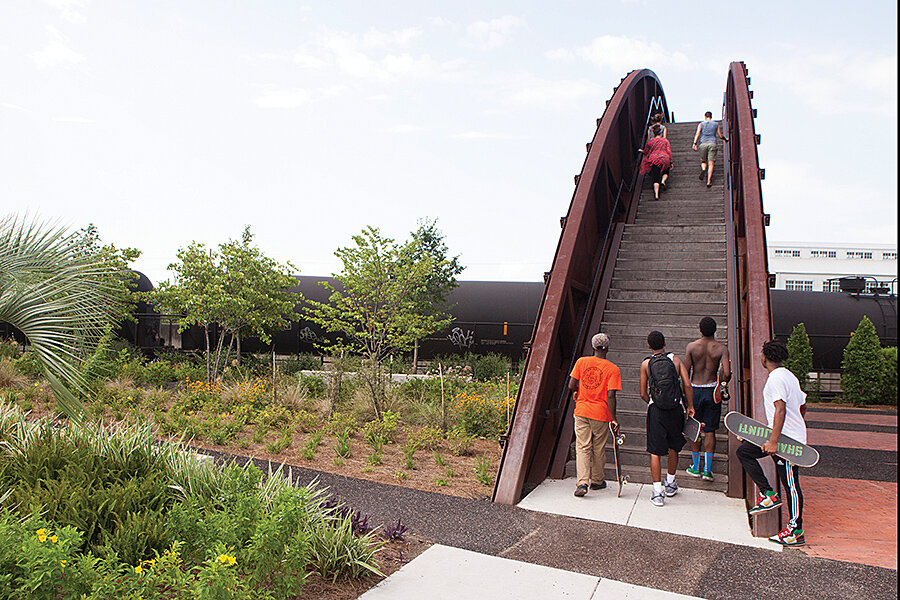Cities worth rebuilding
Loading...
New Orleans was knocked down 10 years ago, its streets flooded, its people made homeless, the government unable to cope with the catastrophe that was hurricane Katrina. In those dark days, some thought the city would never come back.
It has. Like all comebacks, the new New Orleans has the look and feel of the gloriously vibrant city it once was, but it also is different in crucial ways. Patrik Jonsson’s cover story on the Crescent City in 2015 (click here) guides us through the rebuilding, reimagining, and repopulating of a city that has always been both essential and untenable.
Essential: New Orleans sits at the conjunction of the Mississippi River and the Gulf of Mexico. It connects the agricultural and industrial heartland of the United States with the world, the resource-rich waters of the Gulf with refineries that produce half of the nation’s petrochemicals.
Untenable: New Orleans is on average two feet below sea level. Despite the best efforts of engineers, another Katrina, or worse, could again overwhelm the levees, especially if alluvial sediment continues to disappear and climate change affects the oceans.
But every city is both untenable and essential. Vesuvius destroyed Pompeii; Naples is vastly bigger and just as vulnerable. New York sits on bedrock, but superstorm Sandy shut down much of it. Still, people flock to cities. They are drawn in part by the richness of the geography, the attractiveness of the climate, and the opportunity that all those other people also see. Jazz, tech, fashion, and unheard-of collisions of foods and spices emerge.
All those people living side by side, however, represent a potential single point of failure should storms, earthquakes, epidemics, or terrorism strike. But on a planet of 7 billion – with another 2.6 billion arriving by 2050 – more and bigger cities are inevitable. Let’s not imagine that escaping into the woods is for more than a few misanthropes. Let’s prepare.
That means better building codes, better emergency response, wiser management of wetlands and seacoasts, and urgent mitigation of the effects and causes of global warming. Louisiana has a $50 billion master plan that would build better levees, pump sediment onto subsiding shores, and reconnect the Mississippi with its dissipated delta. If funded and proved effective, by midcentury the scheme would create more new land each year than is lost.
New Orleans is brimming with hope and dogged by worry. Young people flock there for its one-of-a-kind culture, but racial and economic divisions persist. Neighborhoods are being rebuilt, but crime rates remain high. And the waters – the usually calm, benevolent presence on the other side of the city’s massive earthworks – can always be stirred with cyclonic force.
New Orleans came back from Katrina. It lives on a bubble. So does every city. But these are pretty great places to live, to enjoy, to pray for, to protect – and if worse comes to worst, to rebuild.








